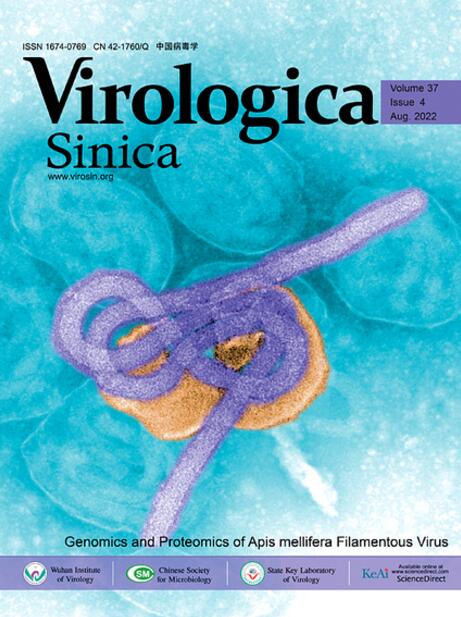Compromised efferocytosis during aging is related to COVID-19 severity in mice
IF 4
3区 医学
Q1 Medicine
引用次数: 0
Abstract
Aging is one of the greatest risk factors for morbidity caused by the coronavirus disease 2019 (COVID-19). In older individuals, a dysregulated immune response to severe acute respiratory syndrome coronavirus 2 (SARS-CoV-2) infection contributes to disease severity; however, the underlying mechanism remains elusive. In this study, we established an aging mouse model of COVID-19, successfully replicating the development of a relatively severe disease in older adults. Further single-cell transcriptome analysis revealed a distinct immune cell landscape in the infected lungs, accompanied by an over-activated inflammatory response, especially in aging mice. Compared to young mice, aging mice showed extensive neutrophil activation, NETosis, and a dramatic decrease in the number of alveolar macrophages (AMs). Moreover, as important executors of efferocytosis, AMs exhibited a low efferocytotic gene signature and downregulation of multiple efferocytosis receptors in aged mice. Further analysis indicated that the efferocytosis of neutrophils, whether undergoing apoptosis or NETosis, was compromised after SARS-CoV-2 infection. Since efferocytosis is a key process in inflammatory resolution, impaired efferocytosis may contribute to hyperinflammation in aging lungs. Our study reveals the characteristics and role of efferocytosis in aging mice after SARS-CoV-2 infection and provides valuable insights for the potential treatment of COVID-19.
衰老过程中红细胞减少与小鼠COVID-19严重程度有关。
衰老是2019冠状病毒病(COVID-19)致病的最大危险因素之一。在老年人中,对严重急性呼吸综合征冠状病毒2 (SARS-CoV-2)感染的免疫反应失调导致疾病严重程度升高;然而,潜在的机制仍然难以捉摸。在本研究中,我们建立了COVID-19衰老小鼠模型,成功地模仿了一种相对严重的疾病在老年人中的发展。进一步的单细胞转录组分析揭示了感染肺部的独特免疫细胞景观,伴随着过度激活的炎症反应,特别是在衰老小鼠中。与年轻小鼠相比,衰老小鼠表现出广泛的中性粒细胞激活、NETosis和肺泡巨噬细胞(AM)数量的急剧减少。此外,作为重要的efferocytosis执行者,AMs在老年小鼠中表现出低的efferocytosis基因特征和多种efferocytosis受体的下调。进一步的分析表明,无论是发生细胞凋亡还是NETosis,中性粒细胞的胞吐功能在SARS-CoV-2感染后受到损害。由于efferocytosis是炎症消退的关键过程,受损的efferocytosis可能导致衰老肺部的高炎症。我们的研究揭示了衰老小鼠感染SARS-CoV-2后efferocytosis的特征和作用,为COVID-19的潜在治疗提供了有价值的见解。
本文章由计算机程序翻译,如有差异,请以英文原文为准。
求助全文
约1分钟内获得全文
求助全文
来源期刊

Virologica Sinica
Biochemistry, Genetics and Molecular Biology-Molecular Medicine
CiteScore
7.70
自引率
1.80%
发文量
3149
期刊介绍:
Virologica Sinica is an international journal which aims at presenting the cutting-edge research on viruses all over the world. The journal publishes peer-reviewed original research articles, reviews, and letters to the editor, to encompass the latest developments in all branches of virology, including research on animal, plant and microbe viruses. The journal welcomes articles on virus discovery and characterization, viral epidemiology, viral pathogenesis, virus-host interaction, vaccine development, antiviral agents and therapies, and virus related bio-techniques. Virologica Sinica, the official journal of Chinese Society for Microbiology, will serve as a platform for the communication and exchange of academic information and ideas in an international context.
Electronic ISSN: 1995-820X; Print ISSN: 1674-0769
 求助内容:
求助内容: 应助结果提醒方式:
应助结果提醒方式:


